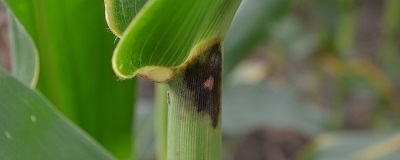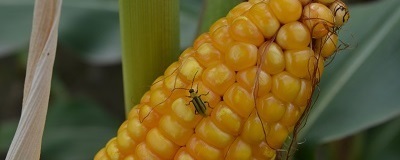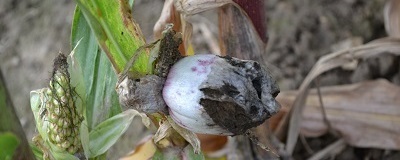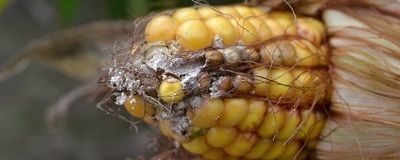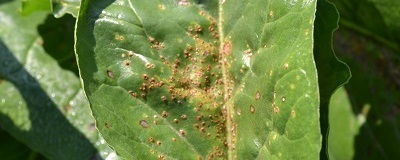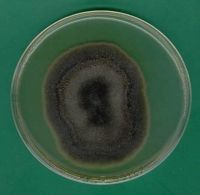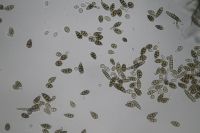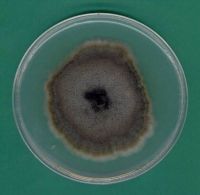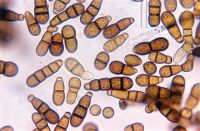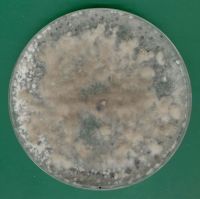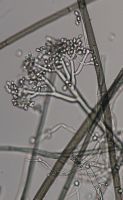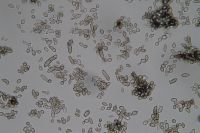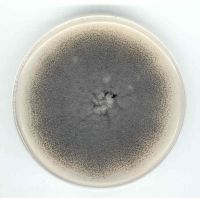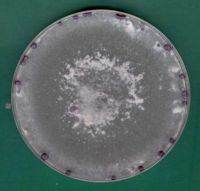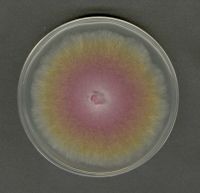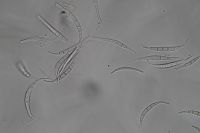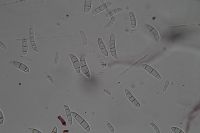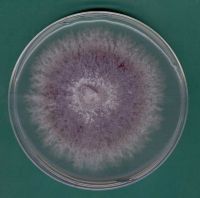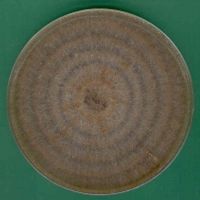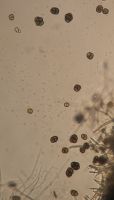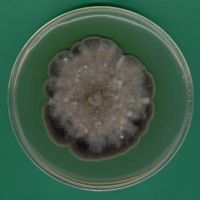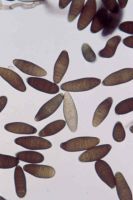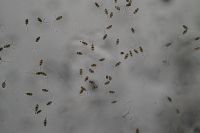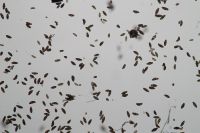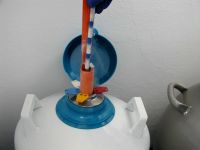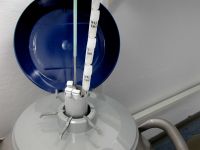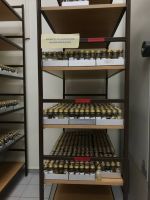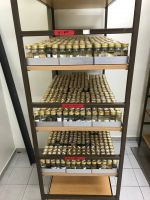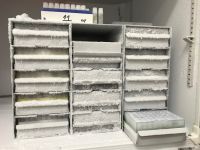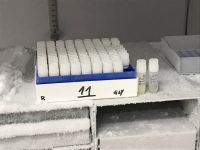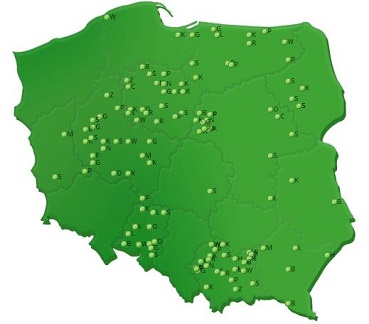Extra menu
Page menu
Navigation path
Social networks icons
Page content
Pathogen Bank
The main purpose of the Pathogen Bank is to collect, identify, store, preserve and share fungal and bacterial plant pathogens in both live and preserved forms. The Plant Micro-Pathogen Collection was established in 1996 and is managed by the Plant Pathogen Bank funded by the Ministry of Agriculture and Food Management.
Depending on the species, pathogens are preserved in mineral oil at 17°C, or are frozen in either a 10% glycerol solution or liquid nitrogen at -196°C. Bacteria are cryopreserved using either the Bacto Protect system or liquid nitrogen. Each pathogen is preserved by at least two complementary methods and thoroughly documented (with photographs, a morphological description, and a record of spore sizes and distinctive structures, etc.).
The collection currently comprises about 2,000 fungal isolates and some 200 bacteria species, mostly from Poland and specifically:
- Fungal pathogens representing the genera Fusarium, Alternaria, Colletotrichum, Verticillium, Sclerotinia, Rhizoctonia, Botrytis, Phytophthora, Pythium, Cladosporium, Phoma and other;
- Bacterial pathogens of the genera Erwinia, Pseudomonas, Clavibacter, Pectobacterium, Xanthomonas, Dickeya, Pantoea and other.
For a full list of the pathogens included in the Plant Micro-Pathogen Collection, see:
http://bankpat.expertus.com.pl/search/
GENERAL SERVICES
- pathogen sharing and exchange (terms and conditions to be agreed on a case-by-case basis)
- identification of pathogenic fungi causing plant diseases (within the Plant Disease Clinic)
- commercial storage of fungal and bacterial cultures
- preparation and distribution of pathogen descriptions in the annual Kompendium symptomów chorób roślin i morfologii ich sprawców (Compendium of Plant Disease Symptoms and Pathogen Morphologies)
CONSULTING SERVICES
- advice on microorganism culturing (selection of growth media and culture conditions)
- advice on the storage and preservation of fungi and bacteria (training courses available)
The Pathogen Bank additionally stores quarantined microorganisms, which are kept in the Research Centre for Quarantine, Invasive and Genetically Modified Organisms at the IPP-NRI in Poznań for regulatory and safety reasons. Quarantined organisms may be shipped as long as a relevant permit has been received from the Regional Plant Health and Seed Inspection Service.
Contact
Instytut Ochrony Roślin – Państwowy Instytut Badawczy
Klinika Chorób Roślin i Bank Patogenów
ul. Władysława Węgorka 20
60-318 Poznań
tel.: +48 61 864 90 99; fax: +48 61 867 63 01
e-mail:
Project implemented as part of tasks 1.5
Multiannual Program of the IPP-NRI for 2016-2020
Plant Protection Institute – National Research Institute
Ulica: Władysława Węgorka 20
60-318 Poznań
tel. +48 61 864 90 75
fax +48 61 864 91 20
